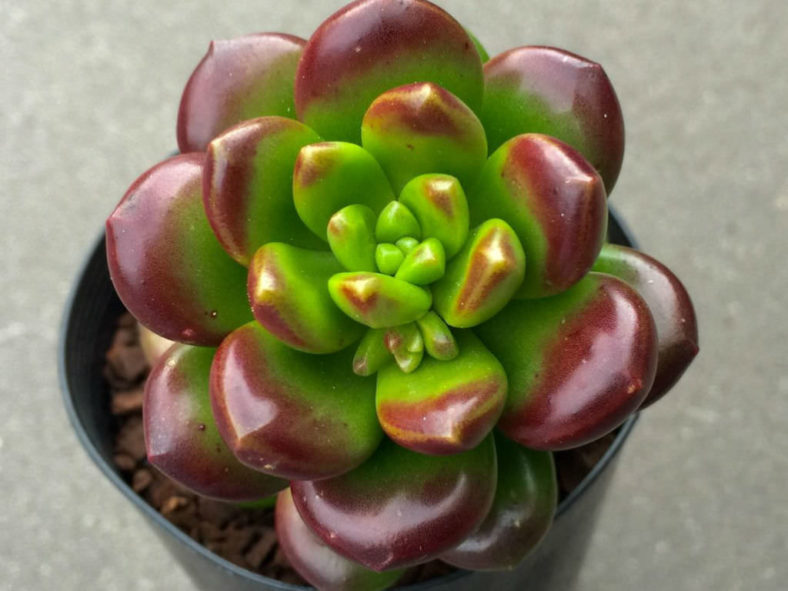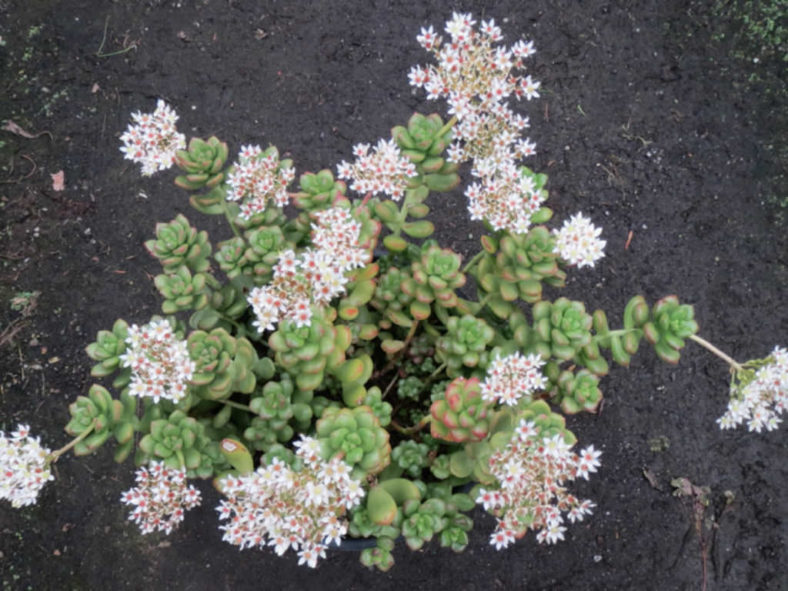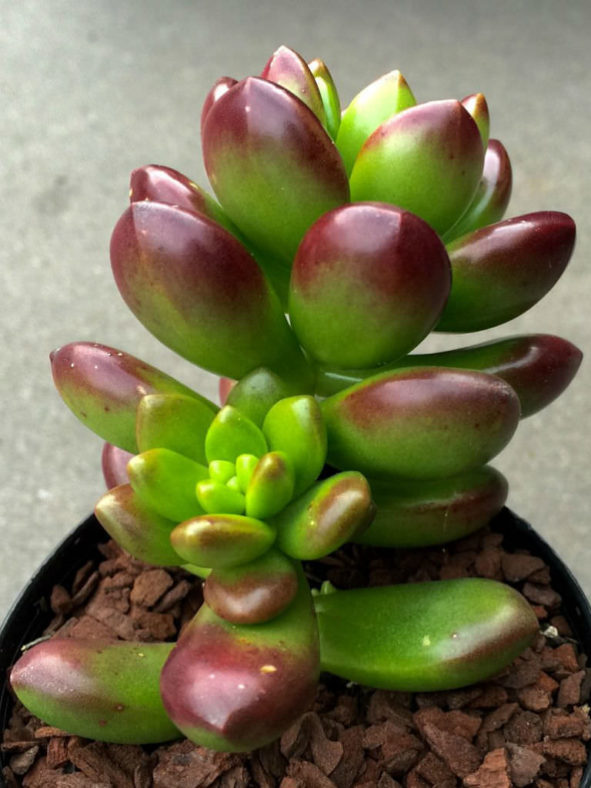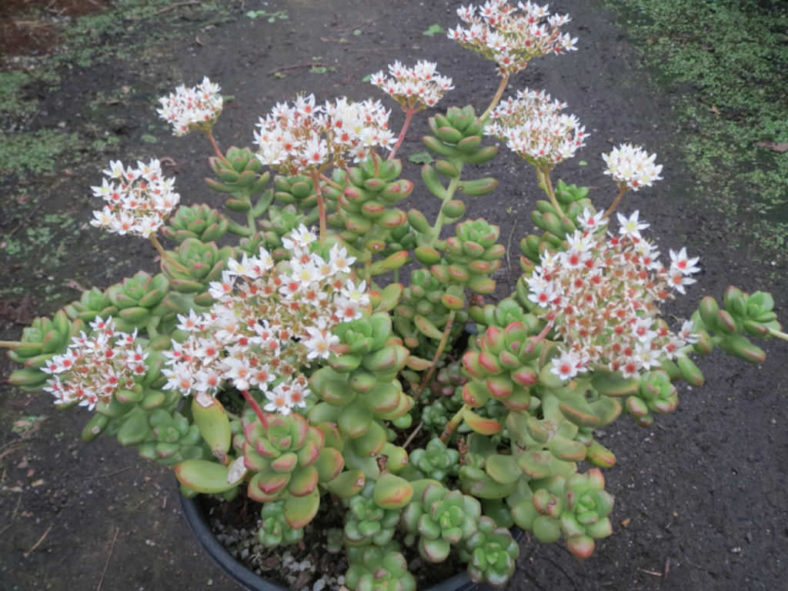Scientific Name
Sedum lucidum 'Obesum'
Synonym(s)
Sedum lucidum ISI 1497
Scientific Classification
Family: Crassulaceae
Subfamily: Sempervivoideae
Tribe: Sedeae
Genus: Sedum
Origin
Sedum lucidum 'Obesum' is an attractive form of Sedum lucidum from a north-facing granite outcrop south of Acultzingo, Veracruz, Mexico. It was distributed as Sedum lucidum ISI 1497 in 1984 by the Huntington Botanical Gardens.
Description
Sedum lucidum 'Obesum', first distributed as Sedum lucidum ISI 1497, is a compact succulent subshrub with much-branched, erect to prostrate stems and egg-shaped, glossy green leaves that blush red in bright light. It can grow up to 18 inches (45 cm) tall. Its leaves are fatter and rounder than the leaves of the typical form of Sedum lucidum.
The flowers are star-shaped, 5-merous with green sepals, white, rarely pinkish petals, and yellow anthers. They appear in tight clusters on branched stalks from late fall to early spring.

How to Grow and Care for Sedum lucidum 'Obesum'
Hardiness: USDA hardiness zones 9a to 11b: from 20°F (-6.7°C) to 50°F (10°C).
When growing Sedums, keep in mind that these plants need very little attention or care. They will thrive in conditions where many other plants thrive, but also do just as well in less hospitable areas. They are ideal for that part of your yard that receives too much sun or too little water to support the growth of other plants. Sedum's common name is Stonecrop because many gardeners joke that only stones need less care and live longer.
Sedum is easily planted. For shorter varieties, simply laying the plant on the ground where you want it to grow is usually enough to get it started there. They will send out roots from wherever the stem touches the ground and the root itself. To ensure the plant starts off well, add a very thin layer of soil covering.
For taller varieties, you can break off one of the stems and push it into the ground where you want to grow it. The stem will root very easily, and a new plant will be established in a season or two.
See more at How to Grow and Care for Sedum.
Links
- Back to genus Sedum
- Succupedia: Browse succulents by Scientific Name, Common Name, Genus, Family, USDA Hardiness Zone, Origin, or cacti by Genus
Photo Gallery
Click on a photo to see a larger version.


